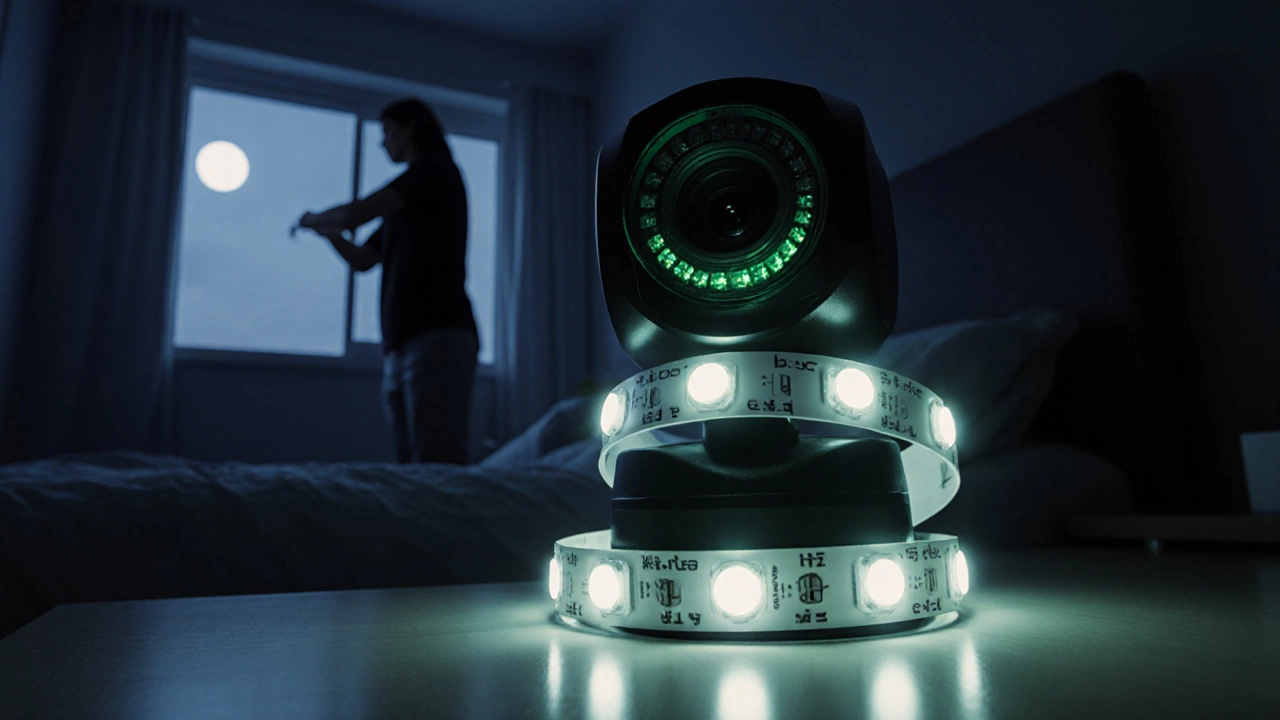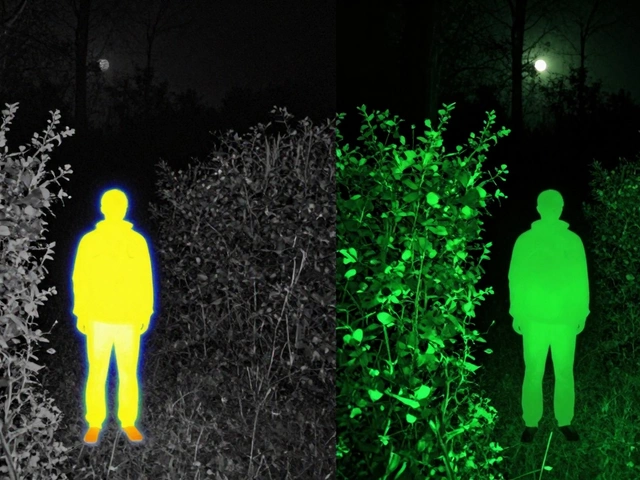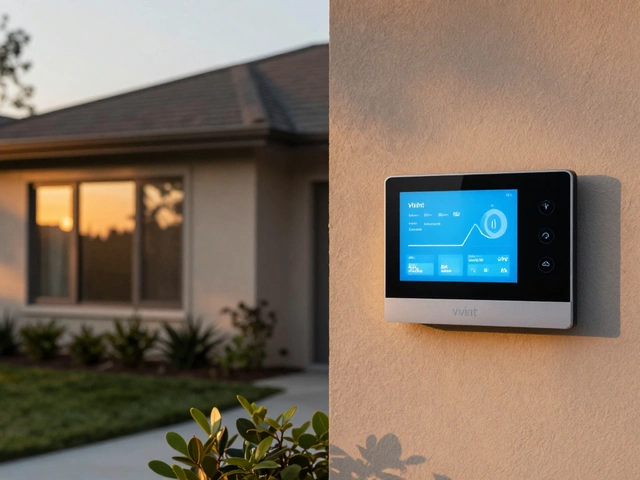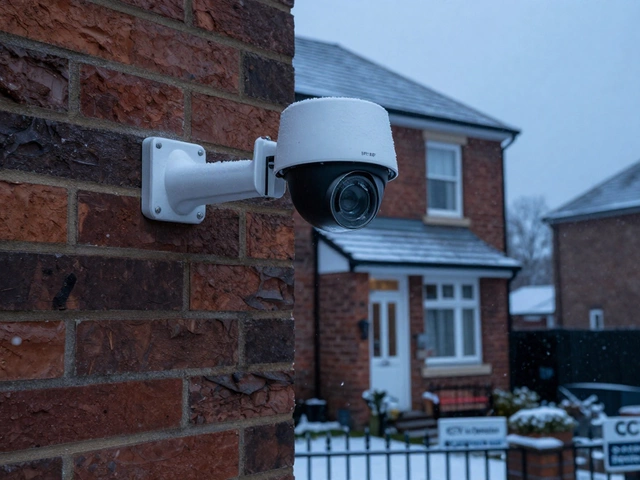Night Vision Tech Selector
Recommended Night Vision Technology
Your requirements suggest the following technology:
Estimated Cost:
Infrared Illuminated Camera
Best for: Backyard monitoring, pet watching
Light requirement: Very low
Cost: £80-£250
Thermal Imaging
Best for: Security perimeters, wildlife hunting
Light requirement: None
Cost: £300-£2,000
Image Intensifier
Best for: Professional surveillance, tactical ops
Light requirement: Almost none
Cost: £500-£1,500
Low-Light Camera
Best for: DIY home security, dash cams
Light requirement: Minimal
Cost: £150-£600
Ever wondered how to navigate a pitch‑black room or keep an eye on the backyard after sunset without flipping a switch? Humans aren’t born with built‑in night‑vision goggles, but technology gives us a handful of tricks to “see” when there’s no visible light. This guide walks you through the science, the gadgets, and even some DIY hacks that let you spot obstacles, animals, or intruders in total darkness.
What Is Night Vision and How Does It Work?
Night Vision is a technology that amplifies whatever tiny amount of light, including near‑infrared, is present, creating a visible image for the human eye or a camera sensor. Traditional night‑vision devices rely on an night vision tube called an image intensifier, which takes photons, multiplies them, and projects a green‑hued picture. The result is a display that looks like an old sci‑fi movie, but it’s actually a real‑time view of the world in darkness.
Infrared Light: The Hidden Helper
Infrared Light is electromagnetic radiation with wavelengths longer than visible red light, invisible to the naked eye but detectable by special sensors. Infrared LEDs are cheap, consume little power, and can blanket an area with light that humans can’t see. When paired with a camera that has an infrared filter removed, the scene lights up in grayscale, revealing details that would otherwise be lost.
Thermal Imaging: Seeing Heat
Thermal Imaging is a method that captures the infrared radiation naturally emitted by objects based on their temperature, creating a heat map regardless of ambient light. Unlike infrared‑illuminated cameras, thermal sensors don’t need any light source at all. Warm bodies stand out as bright spots against cooler backgrounds, making this tech perfect for wildlife spotting, security patrols, and rescue missions.
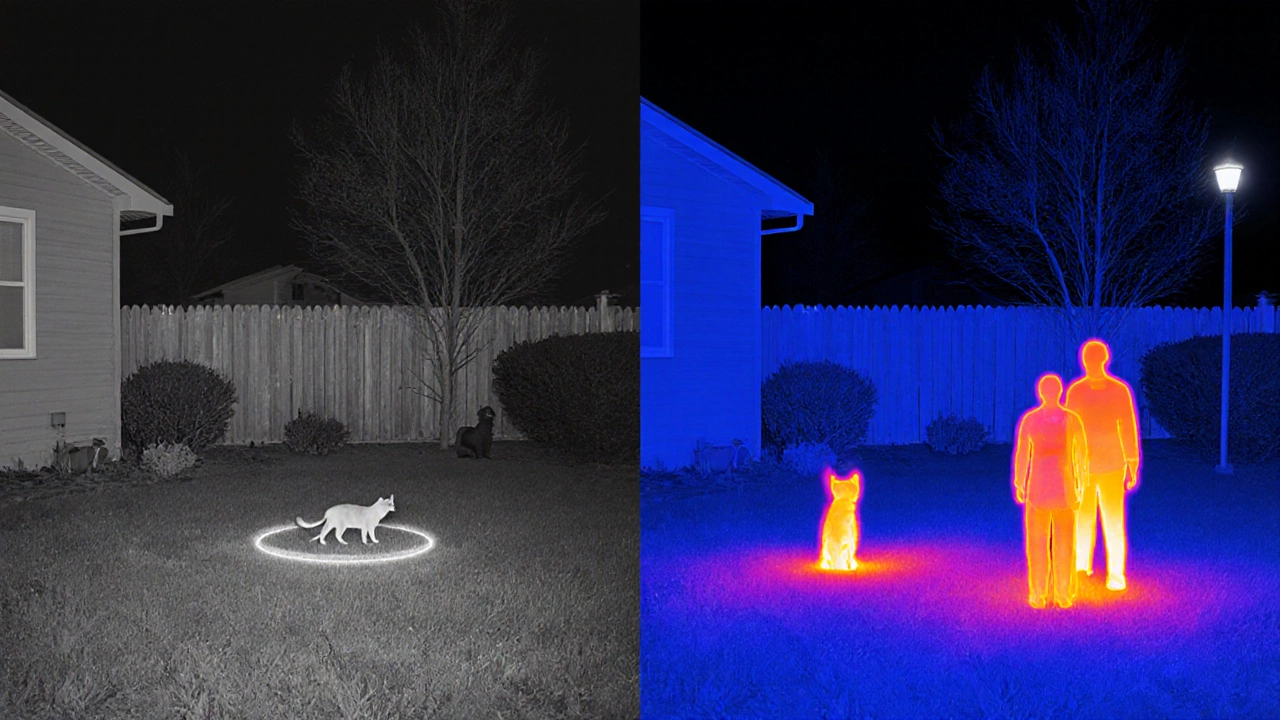
Image Intensifiers: Amplifying Tiny Light
Image Intensifier is a vacuum‑tube device that converts incoming photons into electrons, multiplies them using a micro‑channel plate, and then turns them back into photons for a visible image. Modern generations (Gen3) can amplify a single photon into thousands, delivering clear images in almost complete darkness. However, they are more expensive and can be affected by bright light spikes.
Low‑Light Sensors and Modern Camera Tech
Low‑Light Camera is a digital camera equipped with a large sensor, wide aperture lens, and high‑gain image processing that excels in environments with minimal illumination. Advances in sensor design-particularly larger pixel size and back‑illuminated architecture-allow these cameras to capture usable footage at just a few lux, the amount of light a full moon provides.
Key Technical Factors That Influence Performance
Beyond the broad technology categories, several technical attributes determine how well a device works in darkness:
- Pixel Size is the physical dimensions of each light‑sensing element on a camera sensor, larger pixels collect more photons and thus produce less noise in low light.
- Signal‑to‑Noise Ratio (SNR) is a measure of how much useful image information is present compared to random electronic noise; higher SNR means clearer images.
- Photocell Sensitivity is the efficiency with which a sensor’s photodiodes convert incoming photons into electrical signals, often expressed in ISO values.
- Lumen Output is the total amount of visible light produced by an illumination source, useful when you decide to add infrared LEDs to a scene.
Choosing the Right Tech for Your Needs
| Technology | Light Requirement | Typical Cost (UK) | Best Use‑Case |
|---|---|---|---|
| Infrared‑Illuminated Camera | Very low (needs IR LEDs) | £80‑£250 | Home backyard, pet monitoring |
| Thermal Imaging | None (detects heat) | £300‑£2,000 | Security perimeters, wildlife hunting |
| Image Intensifier (Gen3) | Almost none (amplifies ambient photons) | £500‑£1,500 | Professional surveillance, tactical ops |
| Low‑Light CMOS Camera | Minimal (moonlight, starlight) | £150‑£600 | DIY home security, dash cams |
Read the table and match the column that matters most to you. If you only need to keep an eye on a garden‑path, an infrared‑illuminated camera under £150 does the job. For detecting a prowler hiding behind a fence, thermal imaging typically gives the clearest silhouette.
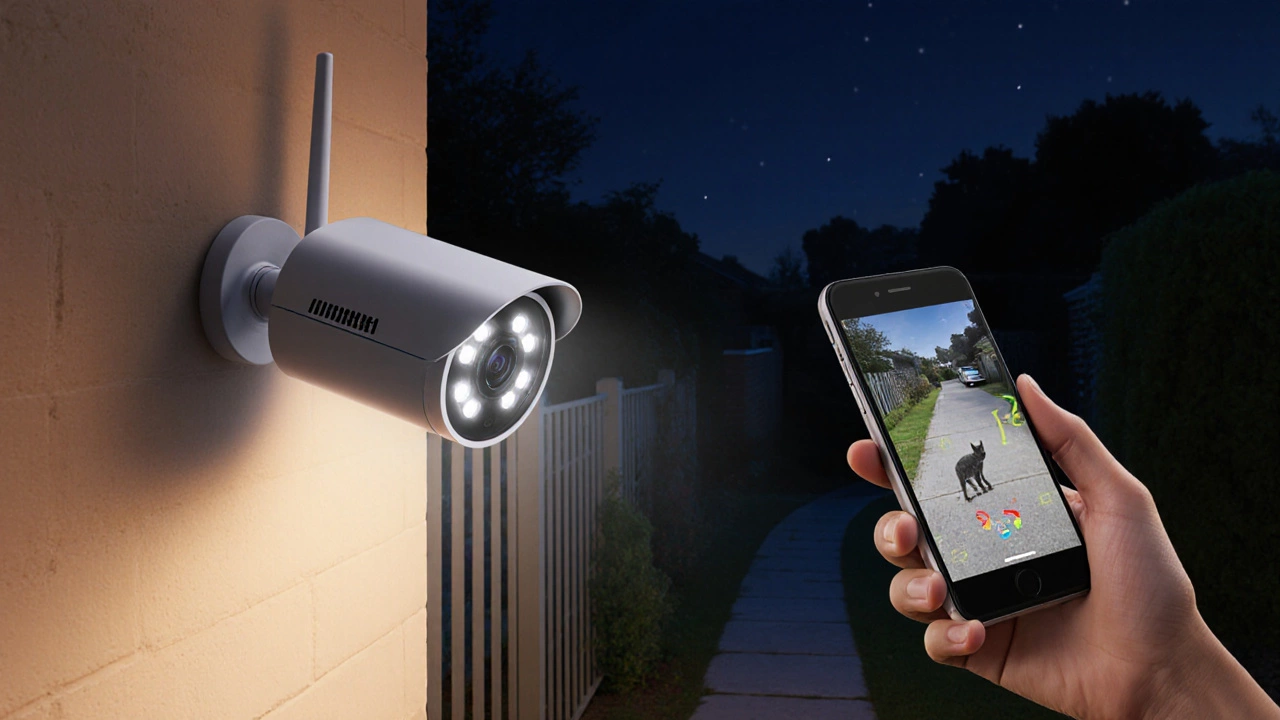
DIY Hacks to Boost Night Sight Without Buying Gear
- Add IR LEDs to existing cameras. Many indoor webcams have a removable IR filter. Simply mount a strip of 850nm LEDs around the lens, power them with a USB‑C charger, and you’ll instantly see in black‑and‑white.
- Use a smartphone’s night mode. Modern phones combine larger pixels (1.8µm) with AI‑driven denoising, letting you capture discernible stills in moonlight. Set the exposure to the longest available (usually 30s) and keep the phone steady.
- Paint a surface with reflective tape. Light‑colored or retro‑reflective material bounces whatever stray ambient light exists, giving the camera something to amplify.
- Upgrade your camera’s firmware. Some security cams include a hidden “night‑vision boost” setting that increases gain and reduces compression artifacts. Look for terms like “enhanced IR” in the manual.
Common Pitfalls and How to Avoid Them
Even the best tech can fail if you overlook simple details:
- Flooding the sensor. Too many IR LEDs create a glare that washes out details. Aim for an even ring of light, not a single hot spot.
- Dirty lenses. Dust or fingerprints scatter the little light you have, reducing contrast dramatically. Clean lenses weekly with a microfiber cloth.
- Wrong mounting angle. Infrared light shines in a narrow cone. If the camera points away from the illuminated zone, you’ll get a black screen. Test the beam with a smartphone camera set to “night mode”.
- Ignoring temperature drift. Thermal cameras can take several seconds to stabilize after being turned on, especially in cold weather. Wait a minute before trusting the image.
Putting It All Together: A Practical Night‑Vision Setup for a Typical Home
Imagine you want a backyard view that works year‑round, costs under £300, and requires no annual subscription. Here’s a step‑by‑step plan:
- Buy an infrared‑illuminated Wi‑Fi camera (e.g., a 1080p model with 850nm LEDs).
- Mount the camera 3m high, angled down 30°, covering the garden gate.
- Run a 12V power line with a weatherproof connector; avoid battery drain.
- Install a short strip of additional IR LEDs (≈15cm) to fill blind spots.
- Configure the camera’s app to record motion only after sunset to save storage.
- Enable the app’s “enhanced night‑vision” mode and test with your phone’s night camera to verify clarity.
After a week of testing, you’ll likely notice the grainy “green” look replaced by clean grayscale details-perfect for spotting a cat sneaking in or a neighbour’s car arriving late.
Frequently Asked Questions
Can humans develop natural night vision?
No, our retinas lack the rod‑cell density needed for true night vision. We can only improve low‑light perception with training or by using external aids like night‑vision devices.
Is infrared light safe for pets and children?
Yes, infrared LEDs (especially 850nm) emit non‑ionizing radiation similar to ordinary heat lamps. They’re widely used in pet‑monitoring cameras without health concerns.
Do thermal cameras work in hot summer weather?
They still work, but the contrast between a human body and a hot background shrinks. Look for models with a high thermal resolution (e.g., 640×480) to maintain detail.
What’s the difference between Gen2 and Gen3 image intensifiers?
Gen3 tubes use a gallium‑arsenide photocathode, offering up to 30,000× gain and better low‑light performance than Gen2, which uses a multialkali photocathode. Gen3 is also more resistant to blooming from bright light.
Can I retrofit my existing security camera for night vision?
If the camera’s IR filter can be removed, you can add external IR LEDs and adjust the firmware to boost gain. Some cheap IP cams, however, have sealed IR filters, making retrofit impossible.

